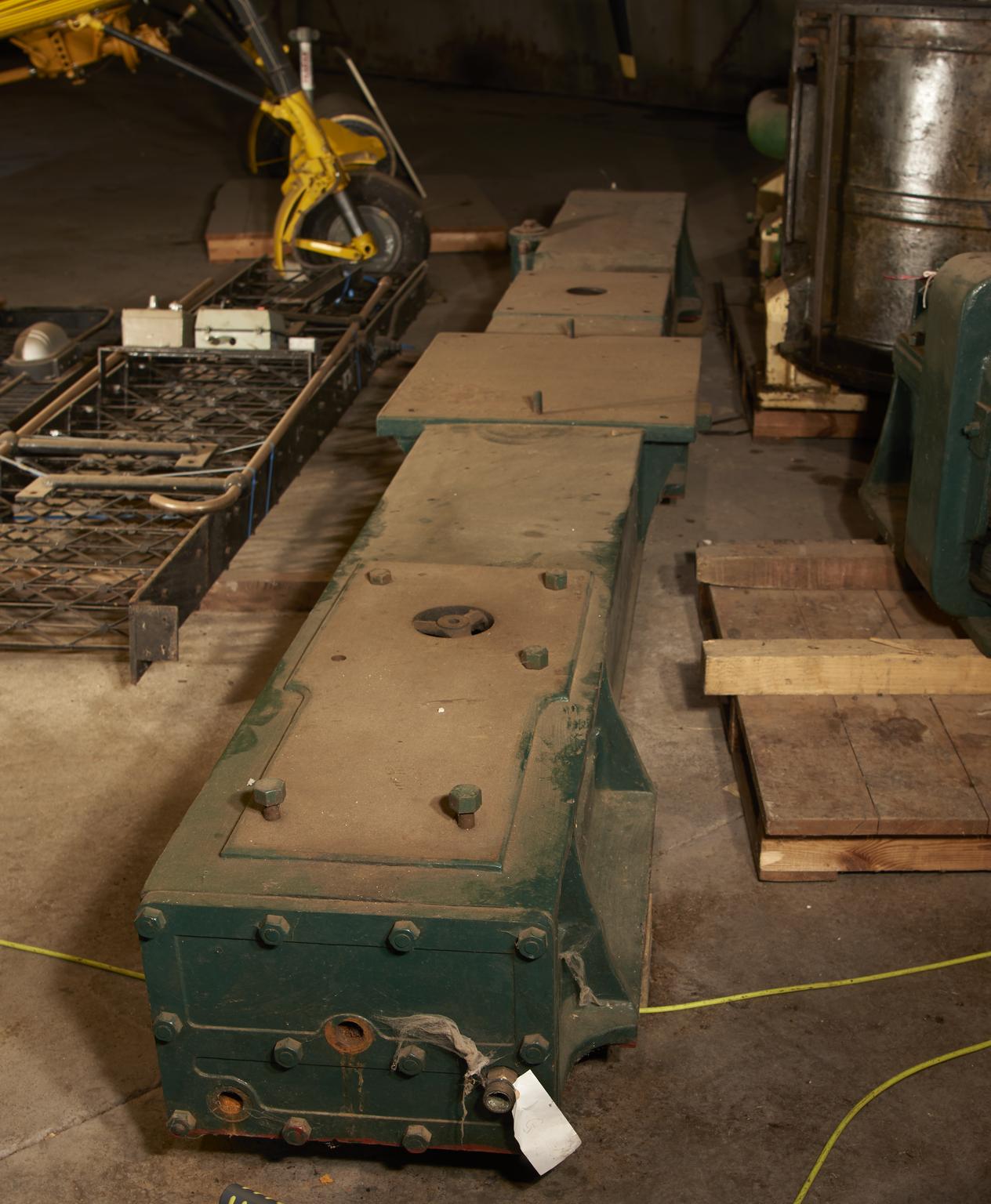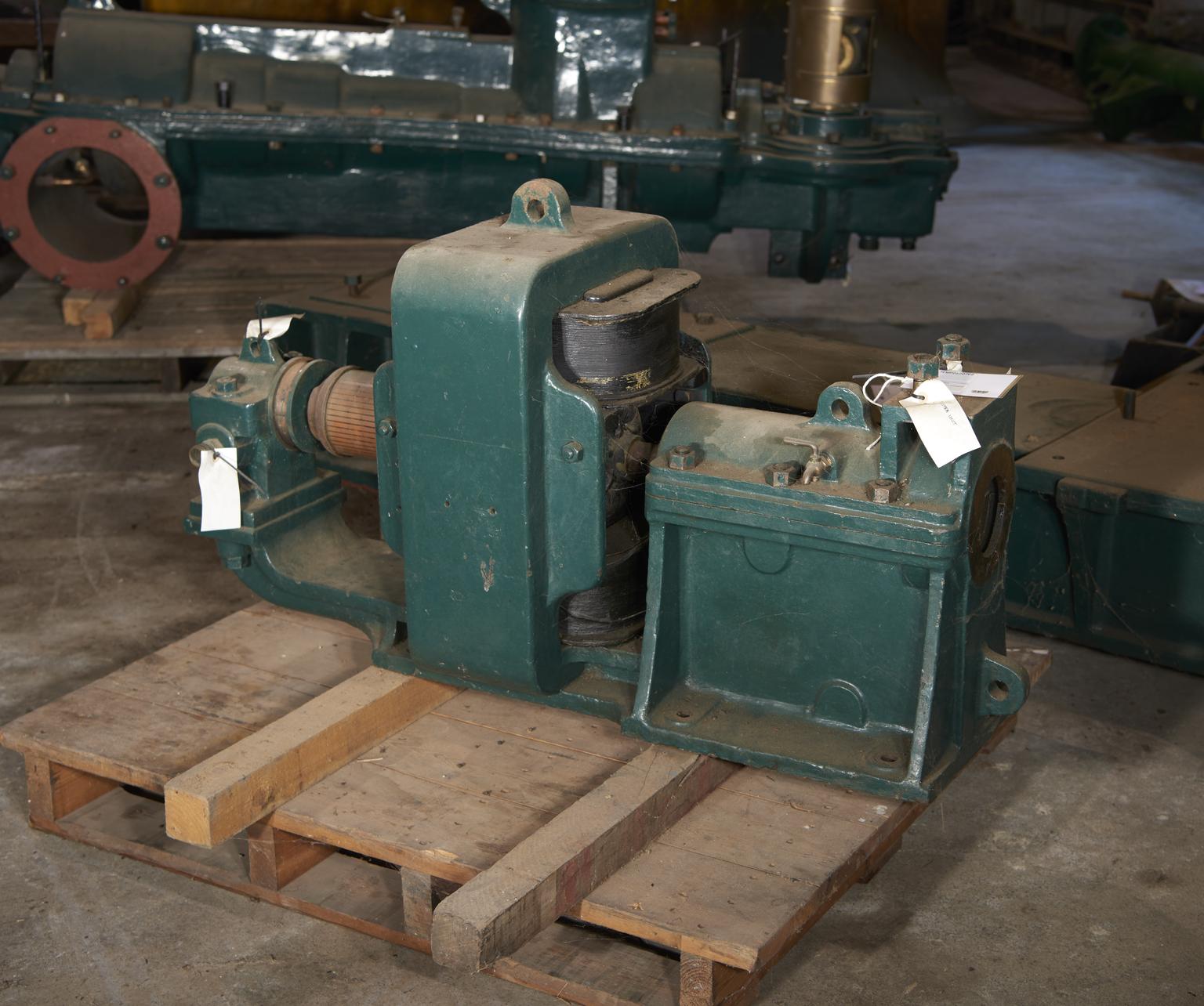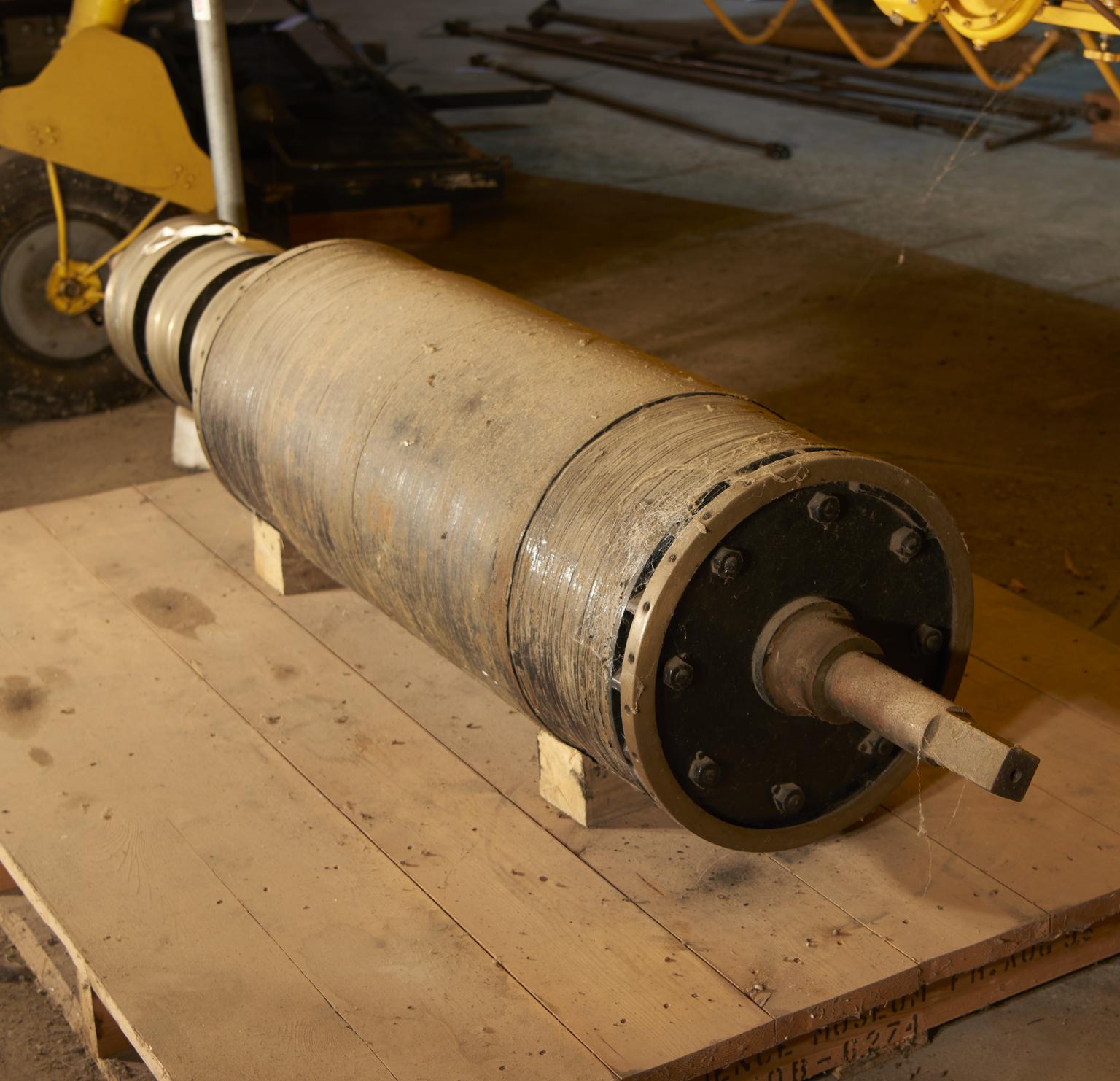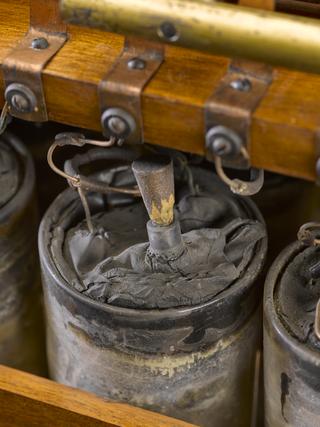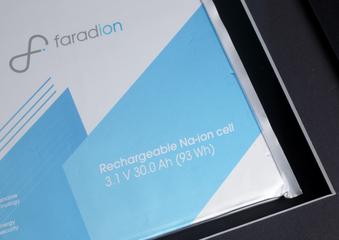
Steam Turbine for Parsons Three-Phase Turbo-Alternator
Steam turbine for Parsons three-phase turbo-alternator made by C. A. Parsons and Company Ltd. at Heaton Works in 1900.
More
This was the first three-phase turbo-alternator to be put to commercial use. All modern electrical generators follow this basic design. Made by the famous C.A. Parsons and Co. at their Heaton Works in Newcastle upon Tyne, the turbo-alternator was ordered by Lord Masham for his Ackton Hall Colliery in Featherstone, Yorkshire. Its primary use was to power his coal-cutting machines. It was retired from the Colliery in 1935 and donated to the Science Museum.
- Measurements:
-
overall: 1350 mm x 800 mm x 3100 mm, 1814 kg
- Materials:
- metal (unknown)
- Object Number:
- 1935-544/1
- type:
- steam turbine
- Image ©
- The Board of Trustees of the Science Museum
